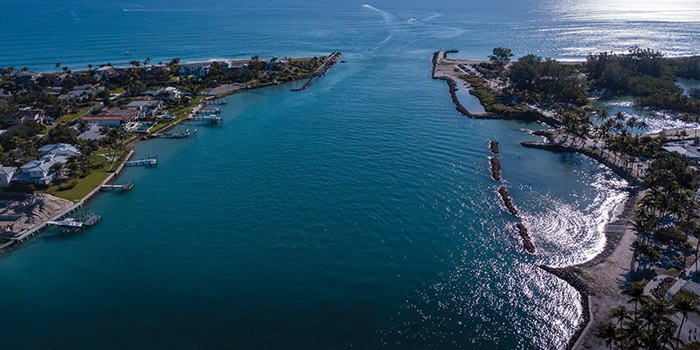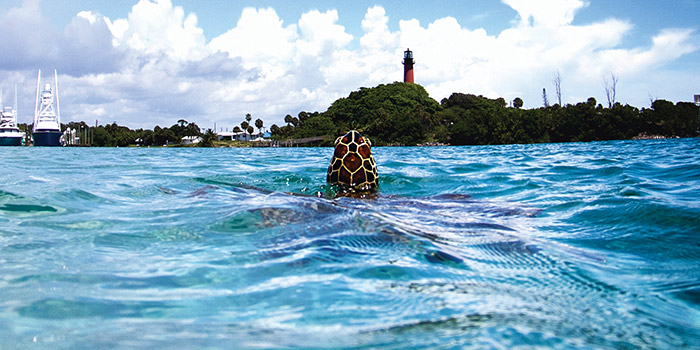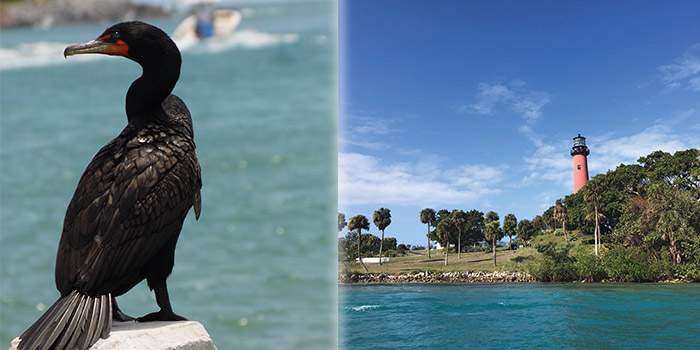Melissa Odabash
- 44 207 499 9129
- email us
- London, West Sussex, United Kingdom


JUPITER, FL – April 30, 2018 – A 400 foot-wide turquoise channel where the Loxahatchee and Indian River meet and spill out to the open waters of the eastern Florida coast—that’s our Jupiter Inlet, and it is teeming with marine life, mangrove swamp ecosystems, and archaeological deposits.
On the north side of the Inlet, there are 120 acres that surround the Jupiter Lighthouse known as the Jupiter Inlet Lighthouse Outstanding Area (ONA) that encompass one of three natural sites in the United States that is protected by the Bureau of Land Management’s National Conservation Lands program. On the south sector of the Inlet, however, there is a specific area spanning the Loxahatchee to the Jupiter River Oxbow of equal environmental and historic importance that is not federally protected. Moreover, this 9.5-acre parcel between Clemons Street and DuBois Park that is popularly referred to as Suni Sands is currently subject to intense development plans that pose a great ecological threat to the area.
The Jupiter Inlet Foundation (JIF), a recently formed non-profit corporation dedicated to the preservation of the natural wonders and historical treasures found in and around the Jupiter Inlet, has made the protection of this area its first order of business.

The Foundation’s core goal is to protect and conserve the natural areas along the waterways of the Jupiter Inlet (Photo by Jeff Biege Photography)
What makes the Suni Sands area so unique? It lies along an estuary that contains a large seagrass bed, which is the food source for green sea turtles, manatees, and fish. The seagrass also acts as a sanctuary for juvenile sawfish, stingrays, and a myriad of other marine species. In addition to marine life, the estuary is also the natural habitat for an array of bird types such as blue herons, ospreys, brown pelicans, and great egrets. Even more fascinating than the wildlife the site boasts, though, is the two-layer mound platform that sits on the shore of the Inlet that, according to JIF, provides evidence of the existence of a pre-historic Indian village where Indian chiefs once lived. Because of its wildlife and historical attractions, the estuary is a common stop for kayakers and paddleboarders.
Given the site’s most recent use, there has likely been minimal impact to the seagrass bed and to the aquatic and bird life that feed there. Soon, that might change. The board members of JIF are concerned that new development and more intensive boat use in this area may pose a serious threat to this fragile ecosystem. Whether by dredging, anchoring of boars, or via propeller impact, damage to this vital seagrass bed and habitat may be irreversible.
“We are leading an effort to conserve areas such as the estuary and protect them from the damage that would be caused by dense commercial development and overexposure,” says Cheryl Schneider, who sits on JIF’s Board of Directors.
The organization was formed by Schneider, MB Hague, Robert Shaw, and Teri Grooms, four environmentally conscious and concerned Jupiter residents that collectively look to “preserve the natural wonders and resources that are true and unique to Jupiter.”
In order to protect the Suni Sands parcel, JIF looks to bring their case to the Florida Department of Environmental Protection (FDEP) to add the area to the Aquatic Preserve Program. As a sustained aquatic preserve, the waterfront estuary would be protected under Florida state statute of the Aquatic Preserve Act and, according to the FDEP website, considered
“a submerged land of exceptional beauty that would be maintained in such a way that its aesthetic, biological, and scientific values may endure for the enjoyment of future generations.” With this designation, the estuary would continue to flourish as a fish nursery, a habitat for endangered creatures, and a rookery for rare birds. It is a big first step, but JIF is forming alliances with the FDEP, the South Florida Water Management District (SFWMD), Loxahatchee River District (LRD) and the Jupiter Inlet District, as well as collaborating with other various federal, state, and local agencies responsible for the monitoring and management of the Loxahatchee River area where the estuary is located. With their help, JIF is collecting the necessary credentials to move forward with the process, so they are well on their way to achieving their goal.

The Jupiter Inlet is home to sea turtles, starfish, manatees, juvenile sawfish, and an array of bird species such as the blue herons, great egrets, ospreys, and pelicans
“The Aquatic preserve designation would provide natural resource protection to the estuary. A management plan would be created to protect the natural condition of the submerged land and associated waters and ensure the long-term health of the ecosystem in the estuary,” says Hague. “Also, if the estuary is part of the Aquatic Preserve Act, there’s a chance that we can obtain signage and channel markers that can protect the area from propeller damage of passing boats. It’s crucial.”
If JIF succeeds in conserving and preserving the estuary, their next goal is to partner with universities and schools to facilitate awareness to the community through historical, archaeological, and environmental management programs. They will implement this precise model for subsequent projects.
“Once these areas have been preserved, the Foundation will provide educational programs that will allow residents and visitors to appreciate the riches and natural beauty of the Jupiter Inlet,” notes Grooms. “We want to be able to reach as many people on the importance of preserving these natural areas.”
Of notable importance is that JIF is not completely against waterfront development, but rather they are advocates for responsible building derived from smart decision-making with consideration of the natural areas.
“We want to affect change and time is of the essence,” concludes Shaw. “We might only have one chance to do it and we want to make that chance count.”
For more information about the Jupiter Inlet Foundation and how to get involved, please visit www.jupiterinletfoundation.org.
Resources:
The Florida Department of Environmental Protection floridadep.gov/fco/aquatic-preserve; U.S. Department of The Interior Bureau of Land Management; www.blm.gov/visit/jupiter-inlet-lighthouse-outstanding-natural-area